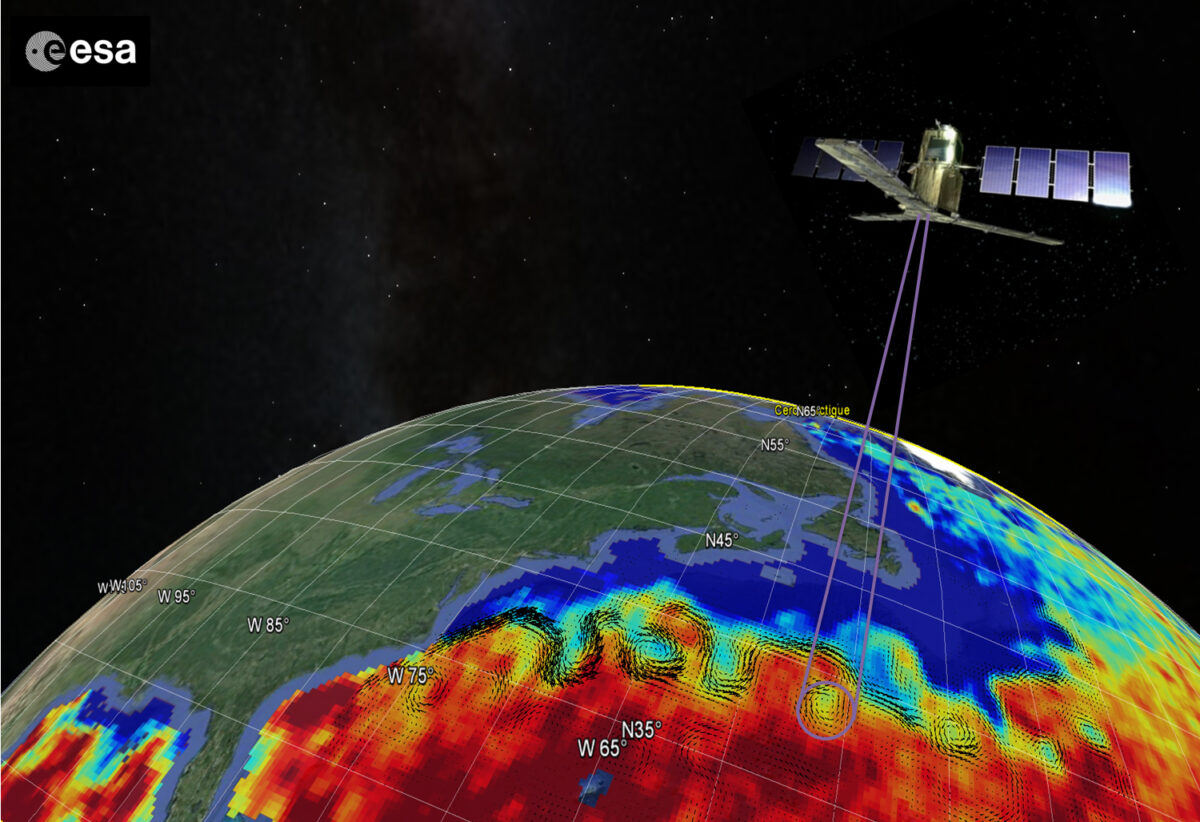The stark difference in temperature and salinity between the warm, salty waters of the Gulf Stream and the cold, fresher waters of the western Atlantic Ocean means that the Gulf Stream is inherently unstable. The contrast causes the Gulf Stream to follow a meandering path, and roughly 5 to 8 times each year a loop of salty or fresh water breaks off as an independent, wandering, rotating eddy. These rings, which are 50 to 150 kilometers wide, can be either cold or warm at their cores, and their existence has important effects wherever they travel.
Tracking the motion of current rings, and of the Gulf Stream itself, is an endeavor that benefits from the broad coverage of satellite sensors. In their research, Reul et al. tested the ability of the microwave salinity detector aboard the European Space Agency’s Soil Moisture and Salinity (SMOS) satellite to detect the Gulf Stream and its rings. SMOS was launched in November 2009.
Using SMOS measurements from 2012, the authors found that the salinity contrast between the Gulf Stream and the current rings is even stronger than the temperature contrast during summer. Combined with measurements of sea surface height, chlorophyll concentrations, and other measures, the authors suggest that the contribution of SMOS satellite salinity measurements may be used to improve tracking of Gulf Stream eddies as they form and propagate on each side of the current. (Geophysical Research Letters, doi: 10.1002/2014GL059215, 2014)
—Colin Schultz, Writer
Citation: Schultz, C. (2015), Satellite salinity data improves Gulf Stream eddy detection, Eos (96), doi: 10.1029/2015EO021215. Published on 7 January 2015.
Text © 2014. The authors. CC BY-NC 3.0
Except where otherwise noted, images are subject to copyright. Any reuse without express permission from the copyright owner is prohibited.

